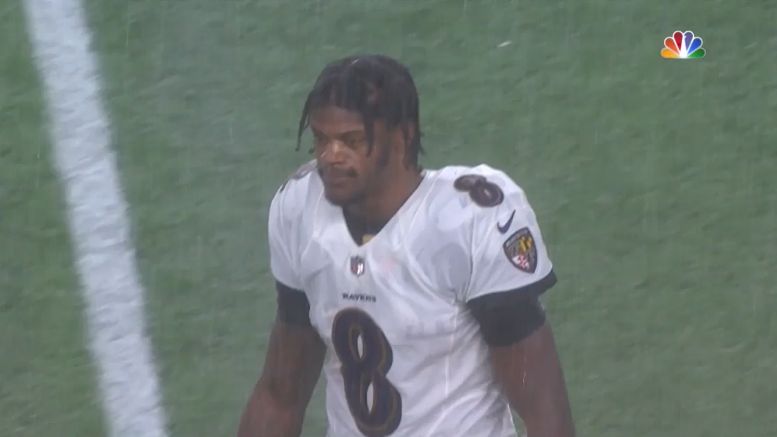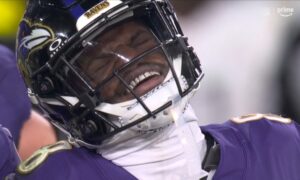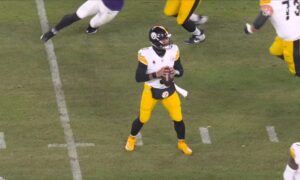Baltimore Ravens quarterback Lamar Jackson went from being the youngest league MVP in NFL history in 2019 to not even making the Pro Bowl last year. While he rushed for over 1000 yards in both seasons, he threw 10 fewer touchdowns, 50 percent more interceptions, and his yards per attempt figure dropped half a yard.
Now three years in the league, it is perhaps too early to say that Jackson ‘is who he is’ as far as his passing skills go. There are certainly areas in which he could realistically improve, including accuracy, processing speed, and general decision-making. Reading defenses can take years for those who didn’t have to do it much in college.
But Pro Football Focus argues that he needs help, with Diante Lee doing a deep dive in breaking down how the offensive passing game changed between 2019 and 2020. The biggest difference: the protection. That should be no surprise, given the amount of time that Ronnie Stanley missed due to injury, couple with the retirement of future Hall of Fame guard Marshal Yanda.
Stanley will be back, and it is reasonable to anticipate both internal and external improvements along the interior—though how the Orlando Brown situation plays out remains to be seen—but simply getting the pass protection back to where it was the year before won’t solve all the problems.
A lot of it is on Jackson, of course, but Lee also makes the cases for the need for a number one receiver—which, again, is no revelation. Citing a need for Jackson to improve in the dropback passing game, he argues that offensive coordinator Greg Roman needs to take some off of his plate in those situations—and they need to find him a target who can get uncovered.
“With that, though, comes a need to have a receiver who can’t be guarded in single coverage to help open up the seams for players like Mark Andrews and Marquise Brown”, he wrote. “The name in neon lights this offseason is Allen Robinson II, and the team that booted Baltimore out of the playoffs is the prevalent example of what having a true No. 1 guy on the perimeter does for a passing offense”.
While Baltimore did use a first-round pick in 2019 on a wide receiver in Marquise Brown, he could hardly be described as a true number one. His primary virtue is his speed—and certainly not his hands. And their second-best wide receiver is…Willie Snead. Barring an unforeseen dramatic improvement from the likes of Miles Boykin and Devin Duvernay and James Proche, the Ravens need some more guys who can catch the ball, and do it at a high and consistent level, making tough catches both in coverage and getting away from coverage. They don’t have that guy right now.








